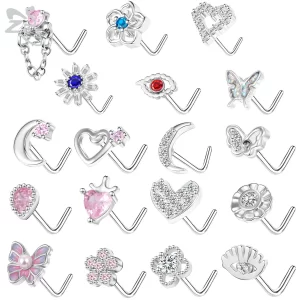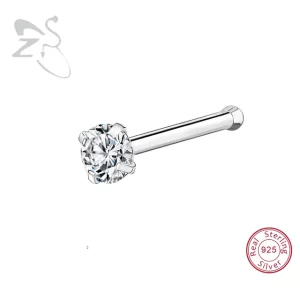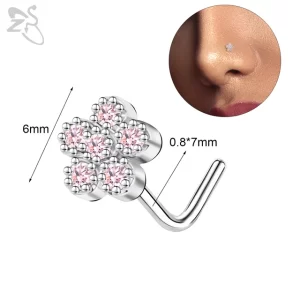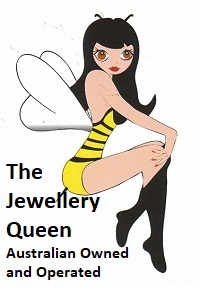The Ultimate Guide to Choosing and Styling Your Nose Stud
Nose Stud A Must-Have Accessory for Effortless Elegance
Listen to the Audio “The Ultimate Guide to Choosing and Styling Your Nose Stud”
 Are you looking to add a touch of effortless elegance to your look? Look no further than the nose stud, the must-have accessory for those seeking to make a bold and fashionable statement. In this ultimate guide, we will explore everything you need to know about choosing and styling your nose stud. From selecting the perfect size and shape to matching it with your personal style, we will delve into the intricate world of nose studs.
Are you looking to add a touch of effortless elegance to your look? Look no further than the nose stud, the must-have accessory for those seeking to make a bold and fashionable statement. In this ultimate guide, we will explore everything you need to know about choosing and styling your nose stud. From selecting the perfect size and shape to matching it with your personal style, we will delve into the intricate world of nose studs.
Whether you prefer a delicate gemstone stud for a dainty touch or a bold and eye-catching design to make a statement, we’ve got you covered. With the right nose stud, you can instantly elevate your appearance, exude confidence, and showcase your unique personality. Join us as we unveil the secrets to finding the ideal nose stud that complements your features and enhances your style. Get ready to discover a world of elegance and chic sophistication with the ultimate guide to choosing and styling your nose stud. Let’s embark on this exciting journey together.
Different Types of Nose Studs
Nose studs are a popular form of body piercing that can enhance your facial features and express your personal style. There are different types of nose studs to choose from, depending on your preference and comfort level. Here are some of the most common ones:
- L-shaped nose studs: These have a straight post with a 90-degree bend at the end that fits snugly inside the nostril. They are easy to insert and remove, and come in various designs and materials.
- Screw nose studs: These have a curved post that twists into the nostril, creating a secure fit. They are more difficult to insert and remove than L-shaped studs, but they are less likely to fall out accidentally.
- Bone nose studs: These have a straight post with a small ball at the end that acts as a stopper inside the nostril. They are simple and comfortable, but they can be hard to remove if the ball gets stuck in the piercing hole.
- Pin nose studs: These have a straight post with no ball or bend at the end. They are held in place by friction or a small backing on the outside of the nostril. They are easy to insert and remove, but they can also slip out easily if not secured properly.
- Hoop nose rings: These are circular rings that go through the nostril and close with a clasp or a seamless design. They can be worn on either side of the nose, and they come in different sizes and styles. They are more visible than studs, and they can also get caught on clothing or hair.
Nose studs are a fun way to accessorize your look, but they also require proper care and hygiene to avoid infections and complications. Make sure to choose high-quality materials that suit your skin type, such as surgical steel, titanium, gold, or silver. Avoid nickel, copper, or brass, as they can cause allergic reactions or tarnish over time. Also, follow the instructions of your piercer on how to clean and maintain your nose stud, and consult a doctor if you notice any signs of infection, such as redness, swelling, pain, or pus.
Choosing the Right Nose Stud for your Face Shape
Nose studs are a popular way to accessorize your nose piercing, but not all nose studs are created equal. Different shapes and sizes of nose studs can enhance or detract from your facial features, depending on your face shape. Here are some tips on how to choose the right nose stud for your face shape.
- If you have a round face, you want to avoid nose studs that are too large or bulky, as they can make your face look wider. Instead, opt for small, delicate nose studs that add a subtle sparkle to your nose. You can also try nose studs that have a slight curve or angle, such as a crescent or a triangle, to create some contrast with your round face.
- If you have a square face, you want to balance out your strong jawline and angular features with nose studs that are soft and rounded. Avoid nose studs that are too sharp or geometric, as they can accentuate your square face. Instead, go for nose studs that have a circular or oval shape, such as a pearl or a gemstone, to soften your look.
- If you have an oval face, you are lucky because you can pull off almost any nose stud. However, you still want to avoid nose studs that are too big or too small for your nose size and shape. A good rule of thumb is to choose a nose stud that is about the same width as your nostril. You can also experiment with different colours and materials of nose studs to match your mood and style.
- If you have a heart-shaped face, you want to draw attention to your eyes and cheekbones with nose studs that are bright and eye-catching. Avoid nose studs that are too dull or plain, as they can make your face look bottom-heavy. Instead, choose nose studs that have some sparkle or shine, such as a diamond or a crystal, to highlight your upper face.
- If you have a long face, you want to break up the length of your face with nose studs that are horizontal or asymmetrical. Avoid nose studs that are too vertical or symmetrical, as they can make your face look longer. Instead, opt for nose studs that have some width or dimension, such as a flower or a star, to add some interest to your nose.
Materials Used in Nose Studs
Nose studs are a popular form of body piercing that can be made from various materials. Some of the most common materials used in nose studs are:
- Stainless steel: This is a durable and hypoallergenic material that resists corrosion and tarnishing. Stainless steel nose studs come in different grades, such as 316L and 316LVM, which indicate the amount of nickel and other metals in the alloy. The lower the nickel content, the less likely it is to cause allergic reactions or infections.
- Titanium: This is another strong and lightweight material that is also hypoallergenic and biocompatible. Titanium nose studs are available in different grades, such as 6AL4V ELI, which is the most suitable for body piercing. Titanium nose studs can also be anodized to create different colours.
- Gold: This is a precious metal that has a warm and lustrous appearance. Gold nose studs are usually made from 14K or 18K gold, which are alloys that contain other metals such as copper, silver, zinc, or nickel. Gold nose studs can cause allergic reactions or infections if they contain too much nickel or other metals that are not compatible with the body.
- Silver: This is another shiny metal that is often used for nose studs. However, silver nose studs are not recommended for new piercings or long-term wear, as they can tarnish and oxidize over time, leaving dark stains on the skin or causing infections. Silver nose studs should only be worn occasionally and cleaned regularly.
- Platinum: This is a rare and expensive metal that has a high resistance to corrosion and wear. Platinum nose studs are hypoallergenic and biocompatible, making them suitable for sensitive skin. Platinum nose studs have a bright white colour that does not fade or change over time.
- Niobium: This is a metal that is similar to titanium in terms of strength, weight, and biocompatibility. Niobium nose studs are also hypoallergenic and can be anodized to create different colours. Niobium nose studs are less common than titanium ones, but they offer a unique and exotic look.
- Glass: This is a non-metallic material that can be moulded into various shapes and colours. Glass nose studs are hypoallergenic and biocompatible, as they do not contain any metals or chemicals that can irritate the skin or cause infections. Glass nose studs are also easy to clean and sterilize, as they do not harbor bacteria or germs.
These are some of the main materials used in nose studs, but there are also other options such as wood, bone, horn, stone, plastic, or acrylic. Each material has its own advantages and disadvantages, so it is important to choose the one that suits your personal preference, style, budget, and skin sensitivity.
Sizing and gauge considerations
 One of the most important factors to consider when choosing a nose stud is the size and gauge of the jewellery. The gauge refers to the thickness of the metal that goes through the piercing hole, while the size refers to the length and width of the stud. The right size and gauge will ensure a comfortable fit, prevent irritation and infection, and avoid migration or rejection of the jewellery.
One of the most important factors to consider when choosing a nose stud is the size and gauge of the jewellery. The gauge refers to the thickness of the metal that goes through the piercing hole, while the size refers to the length and width of the stud. The right size and gauge will ensure a comfortable fit, prevent irritation and infection, and avoid migration or rejection of the jewellery.
The standard gauge for nose piercings is 20G, which is equivalent to 0.8 mm in diameter. However, some people may have smaller or larger piercing holes, depending on how they were pierced and how long they have had the piercing. Therefore, it is advisable to measure your piercing hole before buying a nose stud, or consult a professional piercer for advice. You can use a calliper, a ruler, or a gauge wheel to measure your piercing hole.
The size of the nose stud depends on your personal preference and the shape of your nose. Generally, nose studs come in sizes ranging from 1.5 mm to 3 mm in diameter. Smaller studs are more discreet and subtler, while larger studs are more noticeable and bolder. You should choose a size that suits your style and complements your facial features.
Some common types of nose studs are:
- L-shaped: This type of nose stud has a straight post with a 90-degree bend at the end. It is easy to insert and remove, and stays securely in place.
- Screw: This type of nose stud has a curved post that resembles a corkscrew. It is more difficult to insert and remove, but offers more stability and less chance of falling out.
- Bone: This type of nose stud has a straight post with a small ball at the end. It is simple and comfortable, but may require some pressure to insert and remove.
- Pin: This type of nose stud has a straight post with a flat disc at the end. It is similar to a bone, but has a smoother finish and less risk of snagging.
When choosing a nose stud, you should also consider the material, design, and quality of the jewellery. Some common materials are:
- Surgical steel: This is a durable and hypoallergenic metal that is suitable for most people. However, some people may have an allergic reaction to nickel, which is often present in surgical steel.
- Titanium: This is a lightweight and biocompatible metal that is ideal for sensitive skin. It is also resistant to corrosion and tarnishing.
- Gold: This is a precious metal that adds elegance and luxury to your jewellery. However, you should avoid gold-plated or gold-filled jewellery, as they may wear off or cause irritation. You should also avoid gold lower than 14K, as it may contain other metals that can trigger allergies.
- Silver: This is a shiny and affordable metal that can enhance your jewellery’s appearance. However, silver can oxidize and turn black over time, which may stain your skin or damage your piercing. You should also avoid silver-plated or silver-filled jewellery, as they may have the same problems as gold-plated or gold-filled jewellery.
- Bioplast: This is a flexible and biocompatible plastic that can reduce swelling and inflammation. It is also easy to cut and adjust to your desired length.
Some common designs are:
- Ball: This is a simple and classic design that features a round bead on the end of the post.
- Gem: This is a sparkling and glamorous design that features a gemstone or crystal on the end of the post. You can choose from different colours, shapes, and sizes to match your outfit or mood.
- Flower: This is a feminine and delicate design that features a flower-shaped ornament on the end of the post. You can choose from different types of flowers, such as roses, daisies, or sunflowers.
- Star: This is a fun and whimsical design that features a star-shaped ornament on the end of the post. You can choose from different styles, such as solid stars, hollow stars, or shooting stars.
How to Properly Clean and Care for your Nose Stud
A nose stud is a type of piercing that requires proper cleaning and care to avoid infection and complications. Here are some tips on how to properly clean and care for your nose stud:
- Wash your hands with soap and water before touching your nose stud or the piercing area.
- Use a saline solution or a mild antibacterial soap to gently clean the piercing site twice a day. Avoid alcohol, hydrogen peroxide, or harsh chemicals that can irritate or dry out the skin.
- Soak a cotton ball or swab in the cleaning solution and gently wipe around the nose stud and the piercing hole. Do not twist, pull, or push the nose stud as this can cause trauma or infection.
- Rinse the area with warm water and pat it dry with a clean towel. Do not rub or scratch the area as this can cause inflammation or scarring.
- Apply a thin layer of antibiotic ointment or cream to the piercing site once a day to prevent infection and promote healing. Do not use too much as this can clog the pores and trap bacteria.
- Avoid touching, playing, or changing your nose stud until the piercing is fully healed. This can take up to six months depending on the type and location of the piercing. If you need to remove your nose stud for any reason, consult your piercer or a doctor first.
- Avoid swimming, sun exposure, makeup, or any other products that can irritate or infect the piercing site. If you experience any signs of infection such as redness, swelling, pain, pus, or fever, seek medical attention immediately.
Styling your Nose Stud with Different Outfits and Occasions
A nose stud is a versatile and fashionable accessory that can complement different outfits and occasions. However, not all nose studs are created equal, and some may suit your style and personality better than others. Here are some tips on how to style your nose stud with different outfits and occasions.
- For a casual look, you can opt for a simple and subtle nose stud, such as a small ball, a tiny gem, or a plain ring. These nose studs will not draw too much attention to your piercing, but still add some sparkle and edge to your outfit. You can pair them with jeans, t-shirts, hoodies, sneakers, or any other comfortable and relaxed clothing.
- For a formal look, you can choose a more elegant and sophisticated nose stud, such as a diamond, a pearl, or a gold or silver ring. These nose studs will enhance your piercing and make it look more refined and classier. You can pair them with suits, dresses, skirts, blouses, heels, or any other polished and professional clothing.
- For a fun look, you can experiment with different colours, shapes, and sizes of nose studs, such as a star, a heart, a flower, or a rainbow. These nose studs will make your piercing stand out and show your personality and creativity. You can pair them with colourful, patterned, or quirky clothing that reflects your mood and interests.
Unique and Creative Nose Stud Designs
Nose studs are a popular way to express your individuality and style. They can also enhance your facial features and complement your outfit. But if you’re looking for something more unique and creative than the usual nose studs, you might want to check out these designs.
- Flower nose stud: This design features a delicate flower shape that sits on the side of your nostril. The petals can be made of different metals, such as gold, silver, or rose gold, and can have gemstones or crystals embedded in them. The flower nose stud is perfect for adding some femininity and elegance to your look.
- Spiral nose stud: This design consists of a thin metal wire that spirals around your nostril. The wire can have a smooth or textured finish, and can be twisted into different shapes, such as a heart, a star, or a moon. The spiral nose stud is ideal for creating a playful and quirky vibe.
- Hoop nose stud: This design is similar to a nose ring, but instead of going through your nostril, it attaches to the side with a small stud. The hoop can be simple or decorated with beads, charms, or dangling elements. The hoop nose stud is great for adding some edge and attitude to your appearance.
- L-shaped nose stud: This design has a straight post that goes into your nostril, and a curved end that rests on the outside. The curved end can have various designs, such as a ball, a cone, a bar, or a cross. The L-shaped nose stud is suitable for creating a sleek and minimalist look.
- Custom nose stud: This design allows you to create your own nose stud based on your preferences and personality. You can choose the shape, size, colour, material, and embellishments of your nose stud. You can also engrave your initials, name, or a meaningful word on it. The custom nose stud is the ultimate way to express yourself and stand out from the crowd.
Conclusion and Final Tips for Wearing Nose Studs
 Nose studs are a popular way to express your personal style and enhance your facial features. However, wearing them also comes with some challenges and responsibilities. Here are some final tips to help you enjoy your nose studs without any problems:
Nose studs are a popular way to express your personal style and enhance your facial features. However, wearing them also comes with some challenges and responsibilities. Here are some final tips to help you enjoy your nose studs without any problems:
- Choose the right size and material for your nose stud. You want a stud that fits snugly and comfortably in your nostril, without being too tight or loose. You also want a stud that is made of hypoallergenic and high-quality metal, such as gold, silver, titanium or surgical steel. Avoid cheap or fake jewellery that can cause infections, allergies or irritation.
- Clean your nose stud and piercing regularly. You should wash your nose stud with warm water and mild soap every day, and soak it in saline solution once a week. You should also clean your piercing site with a cotton swab dipped in saline solution twice a day, and avoid touching it with dirty hands or objects. This will prevent bacteria, dirt and crust from building up and causing inflammation, infection or scarring.
- Change your nose stud carefully and occasionally. You should not change your nose stud too often, especially in the first few months after getting pierced. This can delay the healing process and increase the risk of complications. However, you should also not wear the same nose stud for too long, as this can cause the piercing hole to shrink or close up. You should change your nose stud every few weeks or months, depending on how well your piercing has healed and how often you want to switch up your look. When changing your nose stud, make sure to do it gently and slowly, using clean tools and jewellery.
- Follow the aftercare instructions from your piercer. Your piercer will give you specific advice on how to take care of your nose stud and piercing, based on your individual situation and needs. You should follow their instructions carefully and faithfully, and consult them if you have any questions or concerns. You should also visit them for regular check-ups and follow-ups, to ensure that your piercing is healing well and that there are no signs of infection or rejection.
- Enjoy your nose stud and have fun with it. Nose studs are a great way to express yourself and show off your personality. You can choose from a variety of styles, colours, shapes and designs, to match your mood, outfit or occasion. You can also mix and match different nose studs, or combine them with other types of jewellery, such as earrings, necklaces or rings. Nose studs are not only fashionable, but also functional, as they can help you breathe better, reduce snoring or enhance your sense of smell.
We hope this guide has helped you learn more about nose studs and how to wear them properly. Remember that nose studs are not for everyone, and that you should always make an informed and responsible decision before getting pierced. If you do decide to get a nose stud, make sure to do it safely, hygienically and professionally, and to take good care of it afterwards. Nose studs can be a wonderful addition to your appearance and lifestyle, as long as you follow these tips and guidelines.

